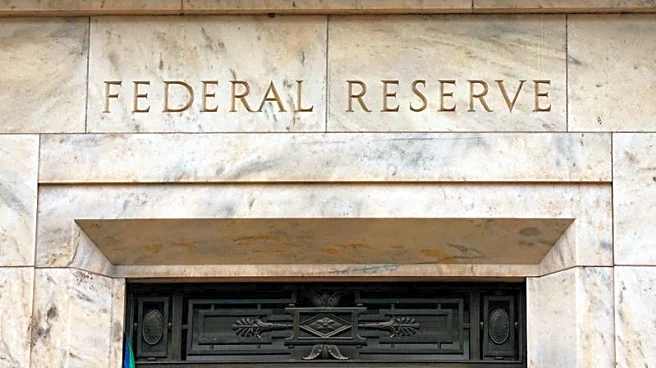What's Happening?
The Federal Reserve is closely monitoring upcoming jobs data to inform its decisions on interest rate cuts at its final two policy meetings of the year. The market currently anticipates a potential reduction in the Fed's benchmark overnight lending rate by year-end, with a two-thirds chance of a half-point cut and a one-third chance of a quarter-point cut. Fed Chairman Jerome Powell has emphasized the importance of data-driven policy decisions, particularly concerning the labor market. The upcoming Job Openings and Labor Turnover Survey (JOLTS) and the September nonfarm payrolls report are key indicators that will shape the Fed's approach. Additionally, the bond market's reaction to economic data, including Treasury yields, is under scrutiny as it influences mortgage rates and broader economic activity.
Why It's Important?
The Federal Reserve's decisions on interest rates have significant implications for the U.S. economy, affecting borrowing costs, consumer spending, and business investment. A reduction in rates could stimulate economic growth by making loans cheaper, potentially boosting sectors like housing and retail. However, the Fed's focus on labor market conditions highlights concerns about employment stability and wage growth. The bond market's response to economic data is crucial, as rising yields could counteract the benefits of rate cuts by increasing borrowing costs. Investors and businesses are closely watching these developments, as they impact financial markets and economic forecasts.
What's Next?
The Federal Reserve will continue to analyze incoming economic data, including the JOLTS report and nonfarm payrolls, to guide its policy decisions. Fed officials are expected to make public statements that could influence market expectations. The bond market's reaction to these data releases will be pivotal in determining the trajectory of Treasury yields and mortgage rates. Additionally, potential government shutdowns and fiscal policy decisions could add complexity to the economic landscape, affecting the Fed's ability to implement its monetary policy effectively.
Beyond the Headlines
The interplay between the Federal Reserve's monetary policy and the bond market underscores the complexity of economic management. While rate cuts aim to stimulate growth, the bond market's independent dynamics can create challenges, particularly if yields rise unexpectedly. This situation highlights the delicate balance the Fed must maintain between fostering economic growth and managing inflationary pressures. The broader implications of these decisions extend to global markets, as U.S. monetary policy influences international trade and investment flows.











